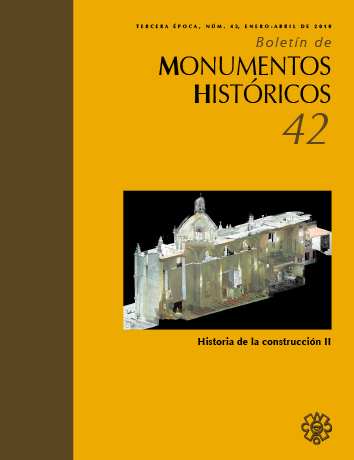Las bóvedas de tezontle en la Ciudad de México: siglos XVII y XVIII.
El caso del templo de San Lorenzo Mártir
Keywords:
vaults, tezontle, stereotomy, construction system, 3D scannerAbstract
In the sixteenth century the main churches in Mexico City had gabled roofs, with a concave roof and wooden armature composed of crossed beams, covered with lead plates; however, for the eighteenth century they changed that constructive system, for a lighter material. Tezontle vaults were the solution to make the structure less heavy. This was the case of the church of San Lorenzo M?rtir, which replaced its former wooden roofing with another made of tezontle. In the first half of the twentieth century, when removing the plaster coating of that vault, a great work of stereotomy was uncovered. In 2016 the whole church was scanned using 3D technology. The objective of this paper is to analyze the changes in the roof of this church.



